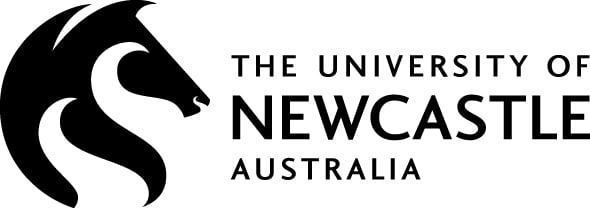Saneia Norton reflects on a time she considers the golden years, though not everything glimmered. As a keen observer of human behaviour, she witnessed a rich display of the good, the bad and the downright horrifying. Here she tries to make sense of it all.

Hey Saneia
I’m turning fifty in a few weeks and feeling a bunch of emotions about life, work and the world. On the upswings, I’m reflective, nostalgic and grateful. And on the downslopes, I’m frustrated, angry and despairing, particularly about gender equity. Help me try to make sense of it.
In the year 2000, you’re 25 and working at the NSW Government Architects Office (GAO) in the afterglow of the Sydney Olympics. The office is thriving – about 120 architects and many more engineers. You’re a keen observer of human behaviour and GAO provides a rich display of good, bad and downright horrifying. Let me catalogue what you witnessed and how I understand it now.
We’ll start with the rose-coloured glasses on.

The good
- Champions: Intelligent and highly respected men who take you seriously. They credit your work and promote you to others.
- Role-models: Talented leaders who are fair, personable and resilient. They expect high standards of you and give direct feedback.
- Friends: You’re never lonely. You get to work with your best mates. You’ve got a ride-or-die gang who keep you sane and a wider group who are always up for coffee or drinks. Friday nights are often legendary.
Many people you meet at this time become an important part of your life. One marries your sister and has two incredible boys. Some support you through cancer. Some give you future work opportunities. You go to each other’s weddings and celebrate each other’s success. You rely on each other for career advice. You’re lucky to have worked with so many awesome human beings and look back on this time as the golden years.
But it wasn’t all golden, was it?
The bad
- Terminal mansplainers: Old guys with sooo much to teach you. You’re overly polite and waste hours listening to them rabbit on. They love how you keep quiet and know your place.
- Garden-variety misogynists: They talk over your head to the men in the room and claim your ideas as their own. They promote young guys over experienced and deserving women, “Isn’t he fantastic? We need to hang onto him.”
- Jolly racists: “What’s your name? Sa-nay-a? I’ll never remember that.” And when your Egyptian curls are especially wild after a fresh haircut, “Stick ya finger in a plug socket did ya?”
Your good manners make you a prime target for these types. You’re keen to impress and highly attuned to the needs of others. You take meticulous meeting minutes, make birthday cakes for the team, organise parties and site visits. You’re praised for this, so at first you don’t mind. But you get increasingly annoyed by the men who talk over everyone in meetings. Men who stuff their face with free cake and then piss off back to their desks. You watch them get promoted and wonder if the time you’ve spent investing in office culture, admin and morale is some kind of trick. On the plus side, your people skills kickstart your future business.
But it wasn’t just bad manners, was it?
The horrifying
- Rage merchants: Some images are seared into your brain. Men who stand to scream at seated women. The smiley guy who punches a wall when he thinks nobody’s around. Rants that escape the soundproof glass office. Tears in the women’s toilets. We all have our turn.
- Cold-eyed manipulators: A government client who bangs his head on the meeting table to get attention. Shoves his palm in someone’s face to stop them talking. Uses the silent treatment. Only deigns to work with a chosen few.
- Skincrawlers: “Give me a call on extension two, eight, five…sixty-nine” (pistol fingers and a wink). Leans in close to show you the new software. Off-colour comments that leave you wondering – did I hear that right?
At the time you accept excuses for this behaviour, “Oh that’s just (insert name), he’s from a different generation. He doesn’t mean anything by it.” But thank God for your close friends. Together you recount experiences like horror stories, shrieking and gasping, trying to make sense of it. “Tell me his exact words.” “How exactly did he touch your hair?” “Who should we tell?” We remind each other not to get caught alone by the photocopier, the compactus, after hours.

Looking back, I’m furious. As young women we juggled an extra mental load alongside our actual, stressful jobs. Was it too much to ask to be respected and safe at work?
At a party last year, a male architect complained to three of us (women), “I can’t even tell a female colleague she looks nice anymore – it’s ridiculous!” We stared back at him. I wish I’d said: “I’m sorry your freedom to pass judgement on our appearance is curtailed. That must be hard. But it means women can now focus on their jobs at work. And this small change in your behaviour means that intentional sleazebags have one less excuse and one more constraint. Isn’t that worth it?”
And recently I was listening to a woman speak at a conference. She was smart and well-prepared. Her project had achieved surprising results. I noticed a young guy in front of me write a note on his phone and show his mate. Over his shoulder, I could see three words: “She is painful.” I felt like slapping the phone out of his hand and hissing “Show some respect!” Or, as a friend suggested, tapping him on the shoulder and showing him three words on my phone: “You are arsehole.”
Of course, the arsehole had the right to like or dislike whoever he wanted, but I was stung by his snap judgement. I felt embarrassed for the speaker and despairing for women architects who, finally given a platform, are still casually dismissed by men.
Our habit as an industry is to venerate and promote male architects. I admire their buildings and enjoy hearing them speak. But increasingly I wonder who we’re not hearing from. If we keep trotting out the usual suspects, hundreds of fascinating stories, insights and experiences remain beneath the surface. And they’ll stay hidden unless we make opportunities and take action.

You’ll be glad to know that I’m on a mission to give more women the tools to speak with confidence. In a lot of my workshops, participants give a speech, and sometimes to their surprise, absolutely nail it. There‘s a particular type of woman I love working with: she’s been slogging away on projects for years but she’s rarely nominated to represent the studio. She’s known for being dependable but not necessarily inspiring, charismatic or entertaining. Her presentation skills are rusty. She’s had a career break. She has caring responsibilities. If she’s asked to give a talk, she’ll probably say she’s too busy and will recommend three other people who’d be more suitable.
My favourite part is giving her feedback, “Your story is powerful. Your insight is valuable. People need to know about you.” Her eyes light up and then look purposeful. She hasn’t heard this recently, if ever.
She holds the untapped gold in our industry. And finding, honing and revealing that gold is the best job I’ve ever had.
So, thank you for bearing witness, gathering experiences and forging connections to shape the next 25 years. We’re just hitting our stride.

Public servant turned entrepreneur, Saneia Norton is a landscape architect and design communication specialist. She founded Saneia Norton Design Communication (SNDC) in 2016 to help design professionals wield words as powerfully as images, build confidence presenting work and move beyond long-held scars of brutal design juries.




















